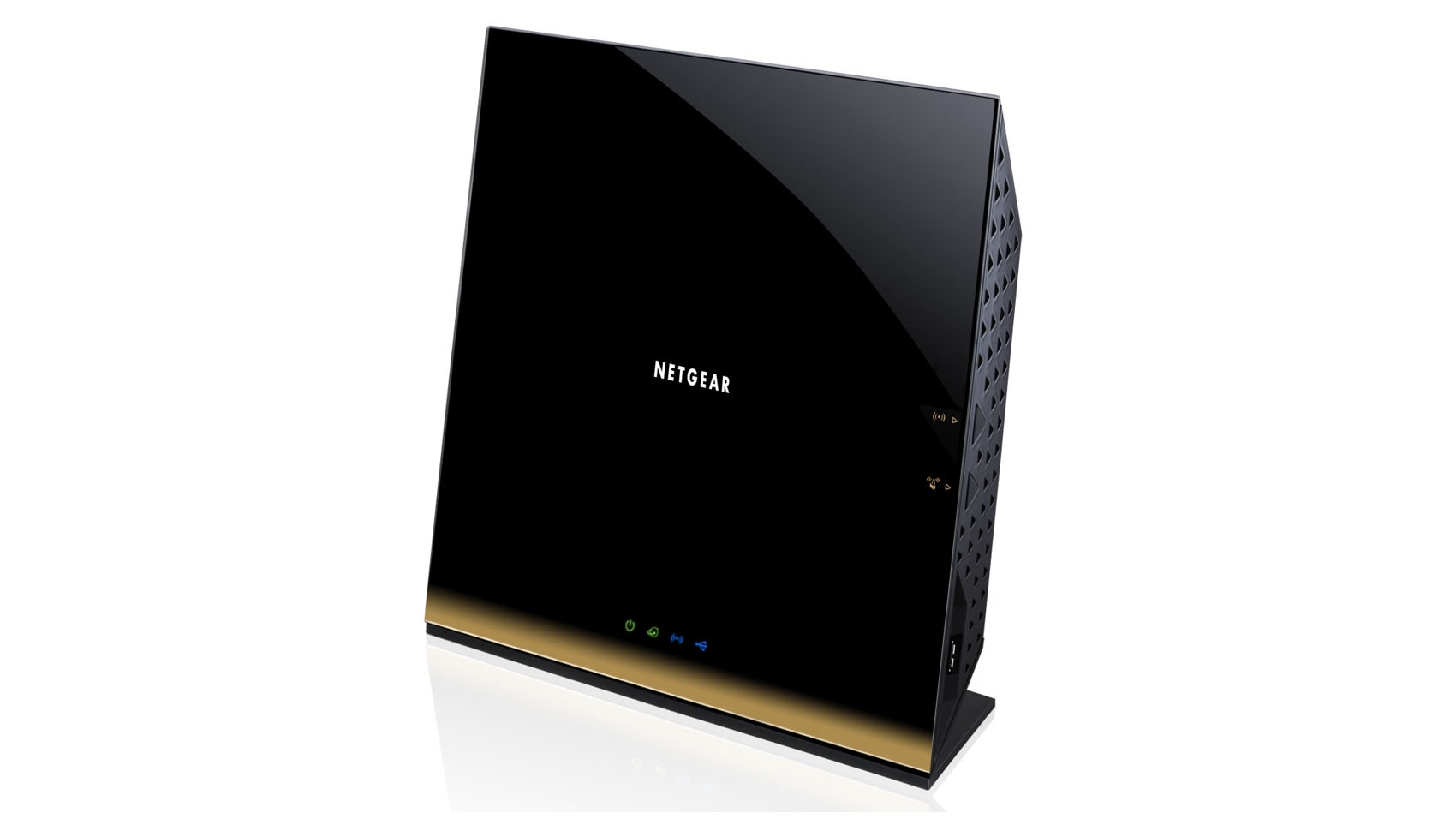TechRadar Verdict
Pros
- +
Good 802.11ac speeds
- +
Excellent 802.11n speeds
- +
4x Gigabit LAN ports
- +
Comprehensive features
- +
Easy to install
Cons
- -
Awkward port placement
- -
Tricky bridge settings
- -
Interface needs polish
- -
Still pricey
Why you can trust TechRadar
The Netgear R6300 AC1750 dual band gigabit 802.11ac router was initially released way back in September 2012. It's as big a name as it is a huge router. At the time, we were reeling from the disappointing 802.11ac showing of the Buffalo AirStation 1750 gigabit dual band router, aka the Buffalo WZR-H1800R,
And, although the Netgear R6300 didn't quite come up to our full expectations of 802.11ac, it was at least a good step in the right direction.
So almost a full year on we're revisiting the Netgear R6300 equipped with the latest v1.0.2.68 firmware update to see if there has been any significant improvements and feature additions since the original release.
Netgear in the release notes does allude to "Wi-Fi performance improvement", which sounds hopeful, along with adding "Beamforming enhancement".
That last feature point is worth covering, because beamforming is one of the final features to be ratified as part of the 802.11ac standard. It was always going to be part of the standard, it's just a matter of how it's implemented so that it's compatible across manufacturers.
Beamforming at its simplest is a way to direct the Wi-Fi signal towards the target destination. It's a signal processing technique that manipulates the phase and amplitude of the transmitted signal, in such a way that through constructive interference increases the signal at the destination. It involves lots of complicated maths.
But does it work? On a notional basis it does seem to. Previous tests with the Netgear R6300 at a distance of 25 metres had the 2.4GHz signal down to around 60Mbps, just generally we wouldn't expect it above 120Mbps anyway. With the beamforming update the signal strength hit 300Mbps, the sort of speed you'd expect in the same room. Throughput correspondingly jumps massively from 4.8MB/s to 13.4MBs.
Sign up to the TechRadar Pro newsletter to get all the top news, opinion, features and guidance your business needs to succeed!
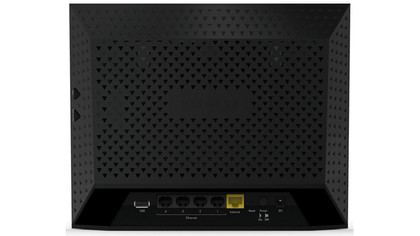
The increase at 5GHz, while not as impressive, was still around a doubling from 120Mbps to 240Mbps. It also impressively bumps the throughput from 8MB/s to 25.3MB/s.
Beyond the performance enhancements, nothing outwardly seems to have changed with the web-based interface. You wouldn't normally expect a firmware point-update to dramatically alter the main interface, though we would hope that Netgear would throw a little spit and polish in its direction soon.
The Netgear R6300 is a pretty striking router for all the wrong reasons. First it's huge, way bigger than anything we've seen previously. At 10 inches wide by 8 inches high, that's bigger than an iPad. On top of that, it's had a cheap-looking gold half-tone gradient effect applied to the huge front-side, which neither looks good nor adds anything useful. At least it comes with a decent stand, unlike the Buffalo AirStation 1750.
Another issue related to the size and design is that it's awkward to reach the rear-positioned ports and power button, because they're recessed into the huge case and you have to reach around to find them. The side-mounted WPS and Wi-Fi toggle buttons are thankfully more accessible.
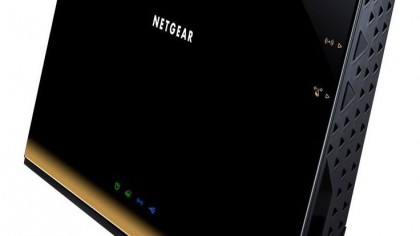
Negatives aside, the router does come with four Gigabit LAN ports, two USB 2.0 ports and a WLAN port. But then we wouldn't expect less. The USB ports support the usual NAS, printer and DNLA media sharing. The NAS supports FAT16/32, NTFS and EXT2/3, which covers the main file systems you'd want.
Installation is a breeze, thanks to the new web-based interface. This can automatically pick up any WAN configuration for you or you can opt for a manual approach.
The Netgear R6300's front-end takes a friendly, colour-coded approach and offers a quick status overview of the internet, wireless, parental and security settings.
Delving deeper, the settings are logically split into Basic and Advanced sections, while the 2.4GHz and 5GHz bands can be configured separately.
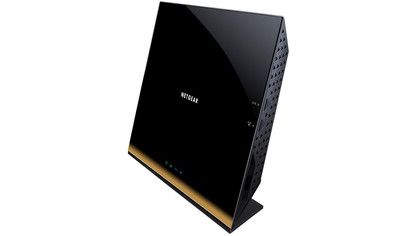
There is a bridge and repeater mode that can handle up to four repeaters, along with a main base station. The bridge mode isn't obvious, and is tricky to initialise. Netgear really should improve this area. For example, the 2.4GHz and 5GHz bands have different MAC addresses, though only the 2.4GHz one is shown on the MAC sticker.
A Guest network mode has already been added, which provides internet access but no local network access to wireless users. Netgear also provides decent Parental Filtering that can be provided on an automatic and keyword basis, making use of the OpenDNS system.
There are also comprehensive logging, scheduled power and access times, plus a bandwidth monitor. Netgear now also offers iOS and Android apps to provide local control and access.
We've always found Netgear interfaces to be fast and easy to navigate. So this newer interface on the Netgear R6300, while not as flash as the Fritz!Box or Asus router offerings, is a pleasant update that provides comprehensive features.
Performance
Testing the Netgear R6300 originally had the same restrictions as testing the Buffalo AirStation 1750 with the Buffalo AirStation D1300 Media Bridge did. Now that 2x2 USB adaptors are available we are at least able to test at range, although USB 2.0 adaptors top off at 35MB/s. Otherwise we're able to keep to our original test scenarios of the same-room, one room away with a solid wall in the way and a 25m line-of-sight distance test.
So how does the updated Netgear R6300 router perform? The good news is that there are some significant increases in performance over the original 2012 firmware release.
The key area of improvement was same-room speeds, with upstream increasing to 50.4MB/s and the downstream taking a 33% increase to 44.9MB/s. This puts it right in line with its ADSL2+ equipped Netgear D6300 cousin but still trailing the 802.11ac leader the Linksys EA6500 that almost topped 70MB/s.
Oddly there was no real change to the middle-distance test that put a solid wall into place. Upstream speeds of 45MB/s and a downstream of 38.8MB/s certainly outrun even the fastest 802.11n routers such as the Western Digital My Net N900 Central with a fastest speed of 31.5MB/s. They are still short of the Netgear D6300, which hit 52.9MB/s, and the Linksys EA6500, which reached 60MB/s at this distance.
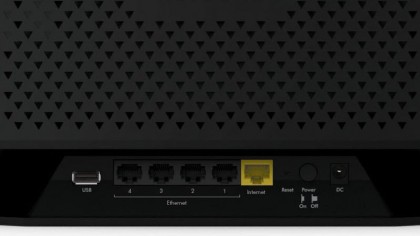
At range, the 25 metre test attained a very fast 25.3MB/s download and 22.4MB/s upload speed, which is double the speed of anything that 802.11n has ever achieved at this range. It's hard to put this in an objective setting - the only other 802.11ac distance test so far was performed with the D-Link DIR-868L, with a downstream of 20.4MB/s, which does place the Netgear a clear 25% faster.
It wasn't just the 802.11ac mode that had improvements. We saw an across the board increase on all our 802.11n tests at the 2.4GHz band. Same-room speeds jumped from 13.8MB/s downstream to 22.1MB/s, with upstream seeing a similarly large increase, jumping from 15.8MB/s to 21MB/s.
Again at a 25m distance the downstream almost tripled its speed from 4.8MB/s to 13.4MB/s. In terms of 2.4GHz 802.11n performance, that takes it from being a relative slouch to one of the fastest performing 2.4GHz routers on the market.
Oddly, 5GHz 802.11n performance seemed to be affected little either at distance or at one-room away distances. If anything we recorded a drop in performance in the same-room scenario.
Verdict
The Buffalo AirStation 1750 was easy to dismiss, with its uninspiring 802.11ac performance. This Netgear R6300 is an entirely different beast, since it's actually delivering much of the speed you'd expect from a next-gen wireless standard, and the latest firmware updates give it a much needed turn of speed.
We liked
The turn of speed 802.11ac is starting to raise eyebrows. Of more use and even better is the 5GHz performance the Netgear R6300 puts in - it's among the fastest we've tested, and at distance is only out-performed by the Netgear DGND 3700.
We also think Netgear has done a sterling job redesigning the web-based interface - while it's not as flash as others, the feature set is excellent. It's easy to use, is fast, but doesn't compromise on information. The same goes for the included ports - we wouldn't expect less than the four Gigabit LANs, two USB ports and the WAN.
We disliked
The physical design does nothing for us, and its size is a actually restrictive, while port positioning is rather poor because of this. Despite our praise for the interface, it could still do with some refining in the looks department, and it's not entirely clear where to find some settings, since they're split between Basic and Advanced sections.
Final verdict
The revised firmware update certainly improves performance almost across the board. Originally we were pleased by the 802.11ac results, but not blown away by them. The update with the added beamforming manages to lift the Netgear R6300 into a definite-buy category.
This is cemented by the huge improvements to the 2.4GHz 802.11n speeds, which had held it back in our minds, limiting speeds with existing devices. While it remains a humongous router, at least the market price has dropped from the initial full price of £200/US$200, bringing it closer to standard dual-band routers and making it a much more tempting purchase.
First reviewed 3 September 2012
